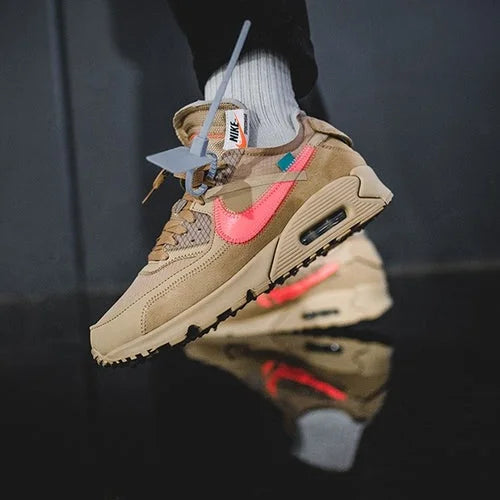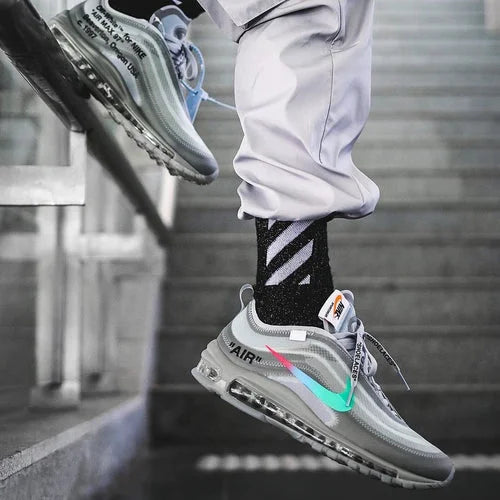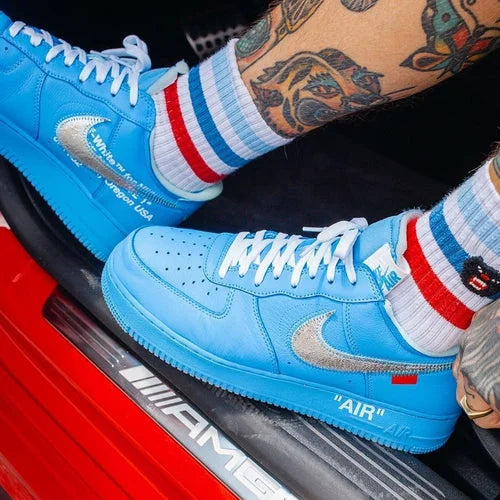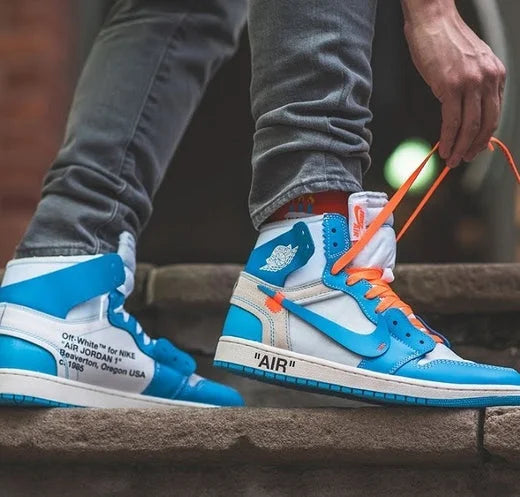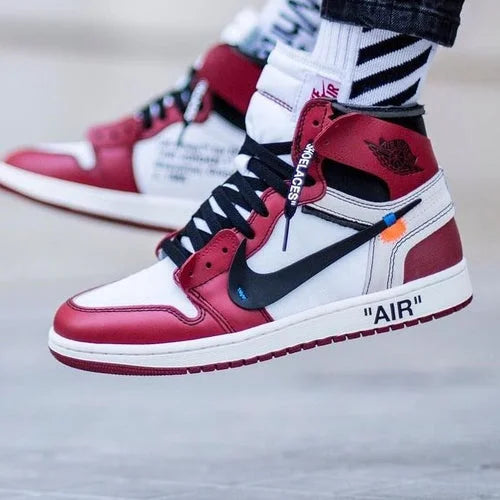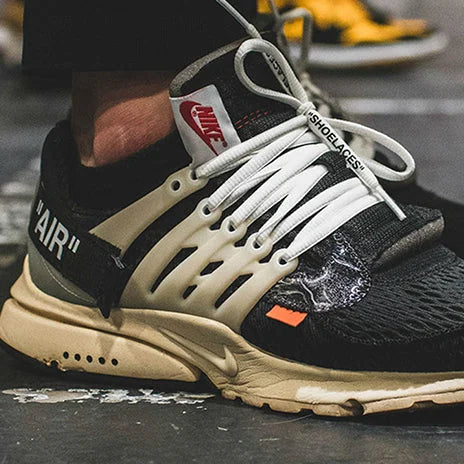How To Spot Real Vs Fake Off-White Air Jordan 4 Sail

Do you want to buy a new pair of Off-White Air Jordan 4 Sail but don’t know how to spot a fake pair? Don’t worry! We’ve got you covered.
Before you continue reading this free authentication guide bear in mind that our Hype authentication department offers professional Jordan 4 Off White authentication services here. Connect & live chat with our legit check experts 24/7.
In this article, you’ll find ten different methods of spotting a fake pair of Off-White Air Jordan 4 Sails without even talking to a professional authenticator.
So, buckle up, because we’re in for a ride!
Table of Contents
[ open ]The Outer Side Method
Starting from the left and moving to the right, the first detail to focus on is the double stitching under the plastic cage.
The stitching would be perfectly parallel in authentic pairs and have minimal space between each stitch. In contrast, as seen in the fake Off-White Air Jordan 4 example, a replica pair would have messy stitching with less consistency throughout the shoe.
Take note of the transparency of the plastic cage, as a fake pair tends to be much more transparent than the authentic one. Additionally, check the shape of the cage: an original Air Jordan 4 Sails pair will have a straight and well-defined cage, while a replica might appear rounder.

The “AIR” Method
Let's zoom in on the "AIR" printing on the midsole, where the differences are immediately noticeable. An authentic "AIR" printing would be thin, tall, and placed quite far down, almost touching the edge of the midsole.
In contrast, replica Off-White pairs often fail to copy the "AIR" midsole printing properly. The comparison below shows that the fake printing appears much smaller and thicker. Additionally, it is placed much higher up on the midsole, deviating from the authentic placement.

The Front Side Method
Continuing with examining the front side of the AJ4 Off White Sails, there are a few more differences worth noting. Firstly, the length of the authentic tongue is shorter than the fake one. An excessively long tongue is a common flaw found among fake pairs.
Additionally, significant differences can be observed when comparing the two plastic 'nets' closer to the toe box. The fake net appears to take up more space, although this can vary depending on the shoe size. The crucial aspect to focus on is the thickness of this net, which is thicker in authentic pairs.
Furthermore, in the Air Jordan 4 Off White real vs. fake comparison below, you can also observe another instance of inconsistent double stitching, a common issue found in replica versions.

The Inner Side Method
Moving on to the fourth method, let's inspect the inner side of the shoe, which also contains a few important details of this beautiful pair.
First, pay attention to the printing underneath the plastic cage. In the fake pair, the printing looks thinner, which is especially noticeable when looking at the ™ mark.
Second, observe the plastic cage once again. The fake pair tends to have a curvier shape, while the authentic one appears much straighter, as indicated by a yellow line.
Lastly, focus on the perforations on the right of the text box. In the authentic pair, the perforation holes are more defined and clean. On the other hand, the counterfeit copy of the shoe often needs to exhibit more consistent and messier perforations.

The Tongue Label Method
Moving on to the outer side of the tongue label, inspecting this area should allow you to spot a replica Air Jordan 4 Off-White easily. Start by examining the stitching, which, as mentioned before, would be very clean and consistent in an authentic pair.
Next, pay attention to the Jumpman logo. In the fake example below, the logo looks incorrect in its dimensions and details, such as the hand.
Colors also play a significant role here. An authentic logo would show a lighter shade of grey. The difference is particularly noticeable when verifying the 'Flight' writing at the bottom, as the fake one looks much more faded yet darker.

The Air Jordan Hang Tag Method
The last Air Jordan 4 Off-White verification method involves examining the Air Jordan hang tag that comes with every pair.
Focus on the shape of the Jumpman logo itself, as it would be much more detailed in the authentic pairs. Moreover, you can observe the difference between the "Air" texts, as the real one is thinner and taller than the bulkier fake one.
Additionally, check the corners of the beige square inside the authentic plastic box; they should be sharp. Meanwhile, as shown in the comparison below, the fake hang tag has its corners looking rounder.

The Rear Stitching Method
The counterfeit shoes exhibit noticeable flaws, particularly in the vertical stitching, which appears excessively thick and short.Additionally, the stitching seems too deeply embedded into the Off-White Sail 4s. Moreover, the curved stitching surrounding and beneath the translucent patch is considerably undersized and bulky on the fake shoes.
In contrast, the genuine sneakers boast superior craftsmanship, evident in their thinner and taller stitching, which also sits less deeply within the shoes than the counterfeit ones.
The Heel Bump Method
The counterfeit shoes' heel line appears nearly straight, lacking any significant curvature.In contrast, the authentic Off-White Air Jordan 4 Sails exhibit a curvier line, accentuating a more pronounced heel bump than what is observed on the fake shoes' heel side.
The Lace Cage Method
The counterfeit cage displays broader openings compared to the genuine pair.
As for the authentic shoes, their lacing cage features three slender rectangles at the top and three squares at the bottom.
The Cross-Stitching Method
The cross-stitching holes on the fake shoes are noticeably smaller, while the authentic pair's holes are larger in size.

